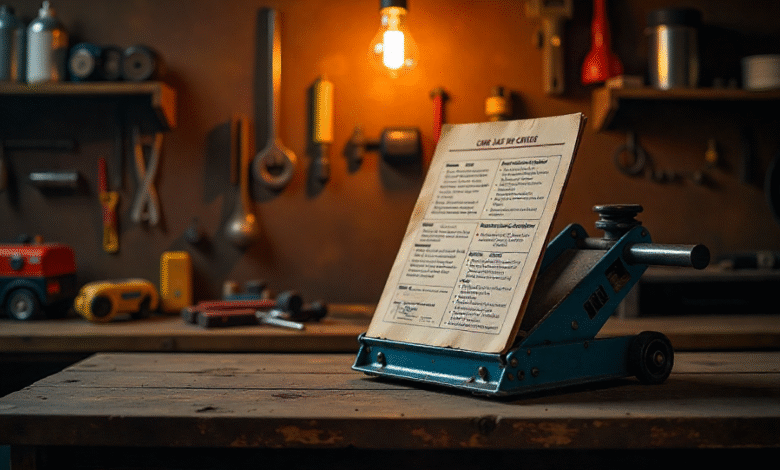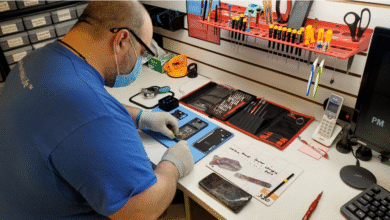Everything You Need to Know About a Car Jack Safety, Types, and Tips

Car Jack is a very important tool for anyone who owns a car. A car jack helps you lift your car safely when you need to change a tire or do small repairs. Using a car jack is much easier than trying to lift a car by hand. There are many types of car jacks available, including scissor jacks, hydraulic jacks, and bottle jacks. Each type works in a slightly different way, and knowing which one to use can save you time and effort. Learning how to use a car jack safely can prevent accidents and keep you and your car safe. Even if you have never used a car jack before, understanding the basics is easy. This guide will give you all the information you need to feel confident using a car jack anytime.
Using a car jack is not only about lifting the car; it is also about staying safe. Always place the jack on a flat surface to prevent the car from falling. Make sure to use jack stands if you are working under the car. Never rely only on the jack to hold your car up while you are working. Knowing the correct position to place the car jack under your car is also very important. Some cars have special points designed for jacks, and using the wrong spot can damage your car. A car jack is a simple tool, but using it the right way keeps you safe. With the right knowledge, anyone can use a car jack to change tires or do small repairs without worry.
Types of Car Jack: Which One is Right for You
There are three main types of car jacks: scissor jacks, hydraulic jacks, and bottle jacks. A scissor jack is small and easy to carry in your car. It is great for emergencies like a flat tire. Hydraulic jacks are stronger and use fluid pressure to lift the car. They are ideal for garages or people who lift cars often. Bottle jacks are small but very powerful and can lift heavier cars. Choosing the right car jack depends on your car’s weight, how often you will use it, and where you plan to use it.
How to Use a Car Jack Safely Every Time
Safety is the most important part of using a car jack. Always use your car jack on a flat surface. Place wheel chocks behind the tires to stop the car from rolling. Never put your hands or feet under a car supported only by a jack. Use jack stands if you need to work under the car. Check the jack for any signs of damage before using it. Always lift the car slowly and steadily. Following these steps can prevent accidents and keep you safe.
Car Jack Tips: Avoid Common Mistakes
Many people make mistakes while using a car jack. One common mistake is placing the jack in the wrong spot. Check your car manual for the correct jacking points. Another mistake is overloading the jack. Every jack has a weight limit, and exceeding it can be dangerous. Never forget to use jack stands if you are working under the car. Also, avoid using a car jack on soft or uneven ground because it can tip over. These simple tips can help you use your car jack safely and effectively.
Car Jack Maintenance: Keep Your Jack in Top Condition
A car jack needs care to work properly. Clean your jack regularly to remove dirt and grease. Check for leaks in hydraulic jacks and oil them as needed. Make sure all moving parts work smoothly. Store the jack in a dry place to prevent rust. Regular maintenance ensures your car jack is ready to use when you need it. A well-maintained jack can last for many years and keep you safe while lifting your car.
Best Car Jack for Different Cars and Needs
Small cars often work well with scissor jacks because they are light and easy to carry. SUVs and trucks may require bottle jacks or hydraulic jacks because they need more lifting power. If you want a jack for emergency use, a scissor jack fits easily in your car trunk. For frequent car repairs or garage use, a hydraulic jack is better. Always choose a jack that fits your car weight and your needs.
Understanding Car Jack Weight Limits and Safety Guidelines
Every car jack has a weight limit. Exceeding this limit can break the jack and cause accidents. Check the weight of your car and make sure the jack can handle it. Always read the instruction manual before using the jack. Never improvise with objects like bricks or rocks under the jack. Following the safety guidelines protects you and your car.
Car Jack vs. Jack Stands: Why Both Are Important
A car jack lifts your car, but it should not hold it for long periods. Jack stands are designed to support the car safely while you work under it. Always use jack stands along with your car jack. Place them under strong points of the car to prevent accidents. A car jack and jack stands together keep your car stable and protect you while doing repairs.
Quick Guide: Changing a Tire with a Car Jack
Changing a tire with a car jack is simple if you follow the steps. First, park the car on a flat surface and use wheel chocks. Second, loosen the lug nuts slightly while the car is on the ground. Third, place the car jack under the correct lifting point and lift the car. Fourth, remove the lug nuts completely and take off the tire. Fifth, put on the spare tire, tighten the lug nuts by hand, lower the car, and then fully tighten the lug nuts with a wrench. Always check that the tire is secure before driving.
Conclusion
A car jack is a small but very important tool for car owners. It helps you change tires, do repairs, and keep your car in good condition. Understanding the types of car jacks, safety tips, and proper maintenance ensures you can use it safely. Remember always to use jack stands if you work under your car. A car jack is simple to use, but following the rules keeps you safe and your car protected.
FAQs
Q1: Can I lift my car with a car jack alone?
A: No, never work under a car supported only by a jack. Always use jack stands for safety.
Q2: How do I choose the right car jack for my car?
A: Check your car’s weight and lifting points, then pick a jack that matches the weight and type of car.
Q3: Can I use a car jack on soft ground?
A: No, soft or uneven ground can cause the jack to tip over. Use a flat, solid surface.



